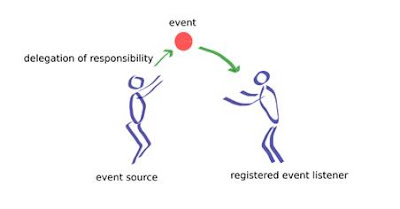Basic of Spring & IoC
What is
Spring?
This
spring tutorial provides in-depth concepts of Spring Framework
with simplified examples.
It was developed by Rod
Johnson in 2003. Spring framework makes
the easy development
of
JavaEE application.
It is helpful for
beginners and experienced persons.
Spring Framework
Spring is
a lightweight framework.
It can be thought of as a framework
of
frameworks because
it provides support to various frameworks such as Struts, Hibernate, Tapestry, EJB, JSF
etc.
The framework,
in broader sense, can be defined as
a structure where
we
find solution of the various technical problems.
The Spring framework
comprises several
modules such as IOC, AOP, DAO, Context, ORM,
WEB MVC etc. We will
learn these modules
in
next page. Let's understand the IOC and Dependency Injection first.
Inversion Of
Control (IOC) and Dependency Injection
These are
the design patterns that are used to remove dependency from the programming code. They make the code easier to test and maintain. Let's understand this
with the following code:
class Employee{
Address address;
Employee(){
address=new Address();
}
}
In such case, there
is dependency between the Employee and Address (tight coupling).
In the
Inversion of Control
scenario, we do this something like this:
class Employee{
Address address;
Employee(Address
address){
this.address=address;
}
}
Thus, IOC
makes the code loosely coupled. In such case, there is no need to modify the code
if our logic is moved to new environment.
In Spring framework, IOC
container
is responsible
to inject the dependency. We provide metadata to the IOC container
either
by XML file or annotation.
Advantage of
Dependency Injection
· makes the code loosely coupled so easy to maintain
· makes the code easy to test
Advantages of
Spring Framework
There are many advantages of Spring Framework. They are as follows:
1) Predefined
Templates
Spring framework provides templates for JDBC, Hibernate, JPA etc. technologies. So there is no need to write too much code. It hides the basic
steps
of
these technologies.
Let's take the example of JdbcTemplate, you don't need to write the code for
exception handling, creating connection, creating statement, committing transaction, closing connection
etc.
You need to write the code of executing query only. Thus, it save a lot of JDBC code.
2) Loose Coupling
The Spring applications are
loosely coupled
because of dependency injection.
3) Easy to test
The Dependency Injection makes easier
to test the application. The EJB or Struts application require server
to run the application but Spring framework
doesn't require server.
4) Lightweight
Spring framework is
lightweight because of its POJO implementation. The Spring Framework doesn't force the programmer to inherit any class
or implement any interface. That is
why it is
said
non-invasive.
5) Fast Development
The Dependency Injection feature of Spring Framework
and
it support to various frameworks
makes the easy development of JavaEE application.
6) Powerful abstraction
It provides powerful abstraction to JavaEE specifications
such as
JMS, JDBC, JPA and JTA.
7) Declarative support


Comments
Post a Comment